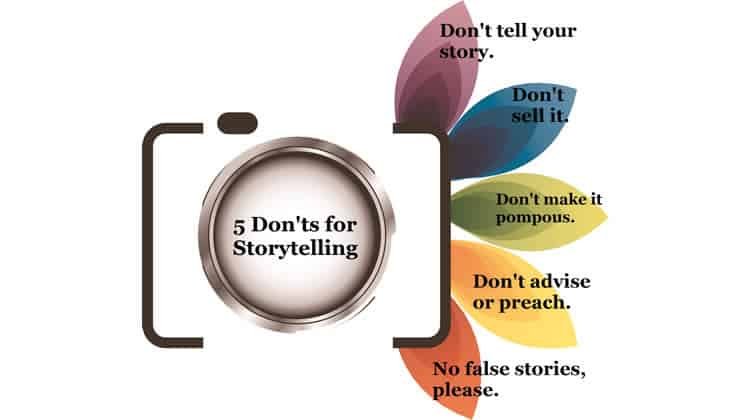
Philip Pullman had quoted: “Stories are the things we need the most in the world, after nourishment, shelter and companionship.” Storytelling is the knack of getting audiences to listen to your story. It is an art, so is content writing. When you write content, it should not be only meant for Google’s ranking algorithms. It should serve its central purpose of conveying things to its audience and mesmerizing them.
What exactly storytelling is and how it can be best employed to convey your brand’s story, we will try to find out in the post. Let’s start.
What Is Storytelling?
Storytelling means bringing the right expression to your story to make your brand influential, bigger and fulfilling. Storytelling involves a certain tone that conveys impressively what you want to present before your audience about your brand.
Some of the benefits of storytelling are discussed below:
- It fascinates audience and improves concentration.
- It helps a brand interpret its experience in a rich way, which makes it look real and persuasive.
- It is convincing and therefore a powerful medium.
Tell Your Brand’s Story
I once read how someone had asked if they wrote a brand’s story in detailed paragraphs telling how it was established and what it did in the market, will it not be considered a storytelling. No, you cannot tell your brand’s story in this way.

What storytelling exclusively means is described below. If you are using it to tell your brand’s story:
- Say it as if you are sitting with your audience and talking to them. You got to be funny, but be effective!
- Talk about that first pulse: How did your brand come into existence?
- Everyone loves a true story, so be real. Only then you look trustworthy to your audience.
- Talk about everyday inspiration.
- Don’t forget to introduce your team. Share about their work.
- Reveal things to amaze your audience. Add humor to your story.
- Talk about your ardent customers who like your brand and take interest in your products.
- Say things with clarity, curiosity and accountability.
- Knit your story in order to amaze and impress your audience.
- Explain the complex.
- Focus on how you tell it. Your storytelling shapes your brand’s future.
How Do You Do, Storytelling?
How you tell your story helps make your brand unique. Storytelling is a subtle approach used to tell a brand’s story. It proves extremely valuable to brands and establishing them. But how should you do it?
You can hire a copywriter who after understanding your brand clearly creates your brand’s story to present it before the audience. It is not tricky unless you make it complex. Say it simple in a simple language, and keep it engaging throughout for your loyal audience. It helps to make it winning.
The more you involve your audience into your storytelling, the better it becomes. It delves your audience more precisely and expressively.
Storytelling ⇨ Participation ⇨ Brand Reputation
Storytelling is a new way to reach out to customers. In simple ways, storytelling arouses interest among audience and invites them to be an important part of it.
Most popular brands have adopted storytelling as means of telling their brand’s story by understanding and embracing their customers into it.
The involvement of customers in creating a brand story leads to a successful brand. How?
When customers turn innovative participants of your brand’s story, they successively become a powerful voice; communicate your brand’s important message and grow to be a vital part of brand reputation.
Storytelling & Customers
Who calls for your brand? Who comes forward to hold it close?
Yes, your customers. By knowing them well and understanding how they are seeking you can help create your brand better. Take for an example, Splenda – an artificial sweetener maker- needs to learn about its customers who are either diabetic or fitness conscious. What are these potential customers trying to seek from Splenda when they are coming to buy it? Once you identify these patterns, you can surely create an effective story. The concept is to go personal and foster strong bonds with them.
Storytelling & Marketing
Unlike marketing which means fluffy stuff and saleable pitch, storytelling stands far, far different.
Storytelling is no popcorn. It aims at generating human interest, associates with customers, and is direct in creating an emotional aura around the brand. Storytelling itself enables the customers for an actionable drive.
| Marketing | Storytelling |
|---|---|
| Proclaim things about a brand. | Shares about a brand |
| Prescribed or declared | Conversational writing |
| Materialistic and pitchy | Humane and involving |
| Surreal | Real |
Storytelling is a two-way approach. You should share your story to evoke emotions in your audience. Marketing should not be the objective of your storytelling. If your story can inspire your customers, it will eventually drive them to take actions.
Some Dos, Some Don’ts
It is important how you create your brand’s story and tell it effectively to make the most out of it. So, let’s know a few dos and don’ts for good brand storytelling.
Dos
- Connect deeply with your audience.
- Talk about behind-the-scenes.
- Create curiosity.
- Open your story with words like “Do you know” or “Sometime back.”
- Share a memorable experience.
- Ask questions, interact.
- Finish with a good end.
- Tell as if you are sitting in front of your audience.
Don’ts
- Don’t tell your story. Convey it.
- Don’t sell it.
- Don’t make it pompous or flippant either.
- Don’t advise or preach.
- No false stories, please.

Key Takeaways
You may have understood by now that storytelling is a compassionate approach, to be felt by your audience. It is important to present your story in a way to connect instantly with your target audience. With human impulse, storytelling should be kept simple and easy to understand and easy to engage with the audience. The objective should be to reinforce interest and bonds, and articulate your brand’s voice. The more effectively you say it, the more enforced your brand becomes.
How did you like the post? Please share your thoughts below. If you have had some amazing storytelling experiences, do not forget to share with us.
Want to learn more?
Are you interested in the managerial and strategic aspects of UX? The online course on UX Management and Strategy can teach you the necessary skills on the subject and earn you an industry-recognized course certificate to advance your career. If, on the other hand, you want to brush up on the basics of UX and Usability, the online course on User Experience might be a better fit for you (or another design topic). Good luck on your learning journey!
(Lead image: Depositphotos)
